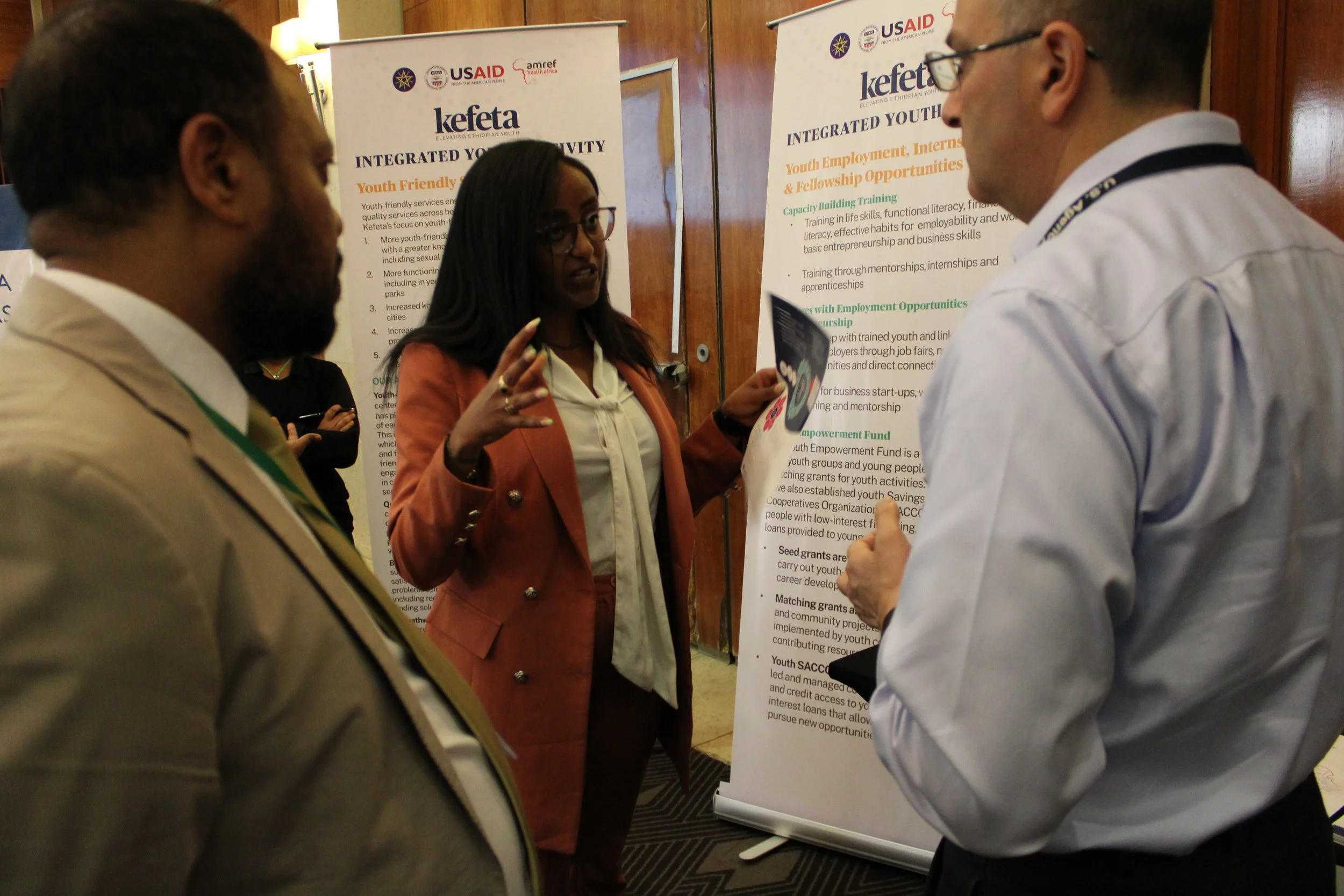In Ethiopia, USAID Implementing Partners Share Experiences with Youth Engagement
Opportunities for youth engagement include the availability of many graduates who are ready for employment, the presence of several universities, youth issues having a prominent place in the global development agenda, the relative availability of technologies for youth, and Ethiopia’s abundant land resources.
The USAID Feed the Future Ethiopia Champions for Food Security (C4FS) Activity facilitated its second learning event on December 13, 2022. The experience learning session was conducted with Feed the Future Ethiopia Implementing Partners (IPs) as part of the agency’s efforts to foster collaboration, coordination, joint learning, and joint implementation among partners.
John Hansen, USAID Ethiopia Director of the Office of Economic Growth and Transformation, opened the event with remarks about the context of USAID programs in Ethiopia and stated that, although most of the population in the Ethiopian economy are youth, “they are not gainfully employed in the economy, including in the agriculture sector.” According to Mr. Hansen, helping educate Ethiopian children and integrating them into the digital economy are the important measures Ethiopia, USAID, and the international donor communities are working on. “One of the key pivots is to support the private sector and to consider Ethiopian farmers as enterprises,” Mr. Hansen added.
Tahir Gero, USAID Ethiopia Youth Point of Contact, referring to a youth study conducted by the World Bank, also indicated that the single greatest pathway to alleviate Ethiopia’s major social challenges is to increase youth participation in education and improve their early career prospects. He emphasized that everyone requires at least basic skills of reading and writing. To support young people’s development in Ethiopia, USAID has updated its youth policy to increase meaningful participation of youth within communities, schools, organizations, economic sectors, peer groups, and families—enhancing their skills and providing opportunities as well as fostering healthy relationships.
Participants in the December 13, 2022 workshop explored ways to center youths' views and ideas during program planning and implementation.
During the workshop, participants identified key constraints and opportunities for designing and implementing youth programming. Some of the constraints included the lack of an enabling environment to engage youth, a dedicated ministry for youth, and updated data to support evidence-informed youth policy (the country’s existing youth policy was issued in 2004). Adding to these challenges are issues of insecurity, insufficient sources of funding, the lack of economic and educational opportunities, and limited access to infrastructure. On the other hand, opportunities included the availability of many graduates who are ready for employment, the presence of several universities, youth issues having a prominent place in the global development agenda, the relative availability of technologies for youth, and Ethiopia’s abundant land resources.
Participants at the December 13 event offered recommendations for how to mitigate some of the challenges they identified as well as how to build on the opportunities to align with USAID priorities. Among these recommendations was to center youths' views and ideas during program planning and implementation.
Dr. Sisay Sinamo, a senior program manager at the Ministry of Health, indicated that Ethiopia has a youth policy, strategy, and programs that are supporting youth and adolescents. “But we have not implemented the existing policies on the grounds as per the plan,” he said. “For instance, there are different job creation schemes for those who have completed different levels of training and education, including university degrees. There are also different forms of job schemes, which include youth cooperatives specialized in construction, poultry, and other activities.”
IPs were able to share insights, identify opportunities for collaboration, and network through an exhibition.


